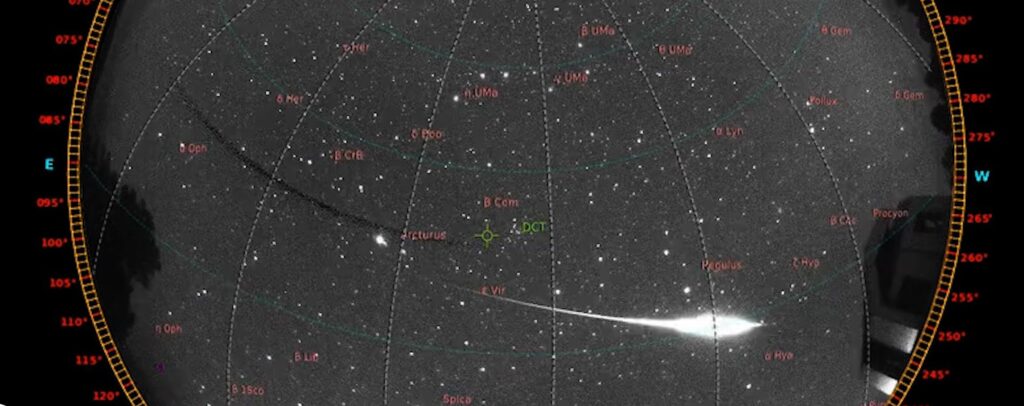
A Lyrids meteor, captured with Lowell Observatory's All-Sky Meteor Surveillance cameras (LO-CAMS).
The Lyrids meteor shower peaks on the evening of April 21 and into the early morning hours of April 22.
What is the Lyrids Meteor Shower?
A meteor is a piece of cosmic debris, such as rock or ice, that enters Earth’s atmosphere. Meteors can range in size from a tiny particle of dust to a large boulder. As the meteor falls through the atmosphere and burns up, it appears as a brilliant streak of light in the night sky. When Earth encounters many meteors at once, it’s called a meteor shower.
Meteor showers are named for the specific point in the sky where the meteors appear to originate. This location is called the radiant. The location of the radiant depends on the combined motion of the Earth and the path of the meteoroids themselves. The radiant of the Lyrids is near the bright star Vega in the constellation, Lyra, named for the Greek sun god Apollo’s harp.
How can I observe the Lyrids Meteor Shower?
The Lyrid meteor shower will peak on the evening of the 21st and continue into the morning of the 22nd. Lyrids tend to be fast and relatively bright, with fairly good chances for bright fireballs. Lyrid meteor showers usually produce 10-18 meteors per hour at the shower’s peak, so catching sight of one may require some patience. However, dense clumps in the meteoroid stream can produce unpredictable outbursts, and these make the Lyrids worth watching every year.
The best time for viewing will fall between midnight and 4 AM. We recommend lying down on a picnic blanket in a dark area with a full view of the sky for the best viewing experience. Be sure to turn off any unnecessary lights to guarantee the best viewing experience.
See the Lyrids Shower at Lowell Observatory!
The purchase of a general admission ticket grants all-day access to the observatory, including a suite of six state-of-the-art public viewing telescopes at the Giovale Open Deck Observatory (GODO). Visit during the Lyrid shower’s peak and see if you can spot any meteors with your own eyes!